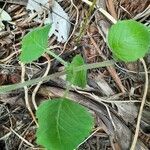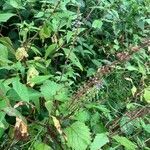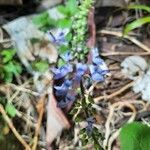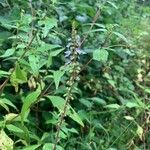A herb or shrub that grows from a tuberous rootstock. It can be 20 cm to 1 m tall. The leaves are 1-3 cm long by 1-4 cm wide. They have large teeth along the edge. Leaves are hairy. The flowering shoots are 30 cm long. They flowers are 4-5 mm across and in rings of six. The fruit are 4-5 mm long.




